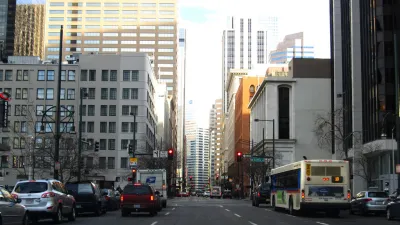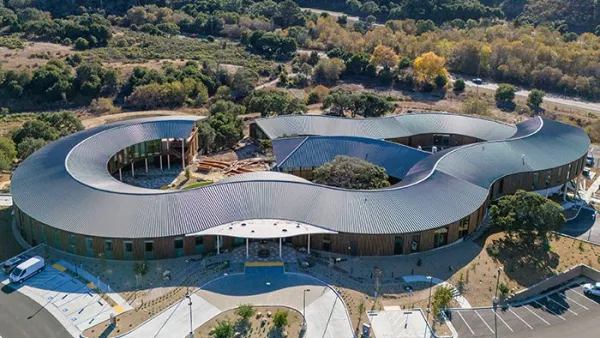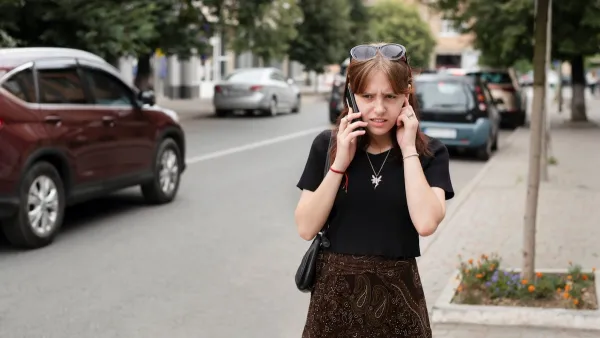A growing awareness of the link between the built environment and mental health has led some designers to examine the ways we can make housing feel more safe and welcoming for vulnerable populations.

In every aspect from transportation to housing, the COVID-19 pandemic laid bare massive inequalities in American society. While "[f]or many of us, the global lockdowns stemming from the COVID-19 pandemic have made our homes places of respite, healing, and renewal," writes Carl Winfield, many people with more complicated housing situations found themselves in even more dangerous positions. Meanwhile, housing conditions, particularly those found in shelters, can trigger difficult emotions for people who have experienced severe trauma.
"The growing awareness of the impact of the built environment on our health is one reason for the growth of trauma-informed design — design that includes adaptations to support a strengths-based framework based in an understanding of, and responsiveness to, the impact of trauma." According to Sandra Serna, vice-president health and housing at Stewards of Affordable Housing for the Future (SAHF), "[s]ubstandard housing — places that are overcrowded, dark, confining, poorly ventilated, or without access to social support — really highlight the negative impact poor-quality indoor environments can have on health." Now, experts are looking at ways to create spaces that "promote feelings of well-being and connection to the environment, that speak to the quality of life." While racial trauma manifests with many of the same symptoms as PTSD, "unlike PTSD, which is linked to a particular experience or series of experiences, racial trauma is marked by continuous direct and indirect exposure to race-based stress, which has a traumatic effect on society as a whole."
One example of a trauma-informed center is Denver's Arroyo Village, which uses trauma-informed design principles to create a safe, supportive space for clients. Shopworks Architecture, who designed the village, "began thinking about ways the built environment can be welcoming, feel safe, and help with the repair and healing of the brain and the prefrontal cortex." Their research led to considerations including the design of stairways to be more open and well-lit, the inclusion of green space and natural light, and other elements that "facilitate safety and belonging."
The work, says Serna, goes beyond just providing a safe, welcoming home for individuals. "The effort to connect residents and help form a larger, interrelated community beyond a particular development has led to the exploration of ways in which people can begin to address their trauma collectively and heal."
FULL STORY: What Is Trauma-Informed Design?

National Parks Layoffs Will Cause Communities to Lose Billions
Thousands of essential park workers were laid off this week, just before the busy spring break season.

Retro-silient?: America’s First “Eco-burb,” The Woodlands Turns 50
A master-planned community north of Houston offers lessons on green infrastructure and resilient design, but falls short of its founder’s lofty affordability and walkability goals.

Delivering for America Plan Will Downgrade Mail Service in at Least 49.5 Percent of Zip Codes
Republican and Democrat lawmakers criticize the plan for its disproportionate negative impact on rural communities.

Test News Post 1
This is a summary

Test News Headline 46
Test for the image on the front page.

Balancing Bombs and Butterflies: How the National Guard Protects a Rare Species
The National Guard at Fort Indiantown Gap uses GIS technology and land management strategies to balance military training with conservation efforts, ensuring the survival of the rare eastern regal fritillary butterfly.
Urban Design for Planners 1: Software Tools
This six-course series explores essential urban design concepts using open source software and equips planners with the tools they need to participate fully in the urban design process.
Planning for Universal Design
Learn the tools for implementing Universal Design in planning regulations.
EMC Planning Group, Inc.
Planetizen
Planetizen
Mpact (formerly Rail~Volution)
Great Falls Development Authority, Inc.
HUDs Office of Policy Development and Research
NYU Wagner Graduate School of Public Service





























